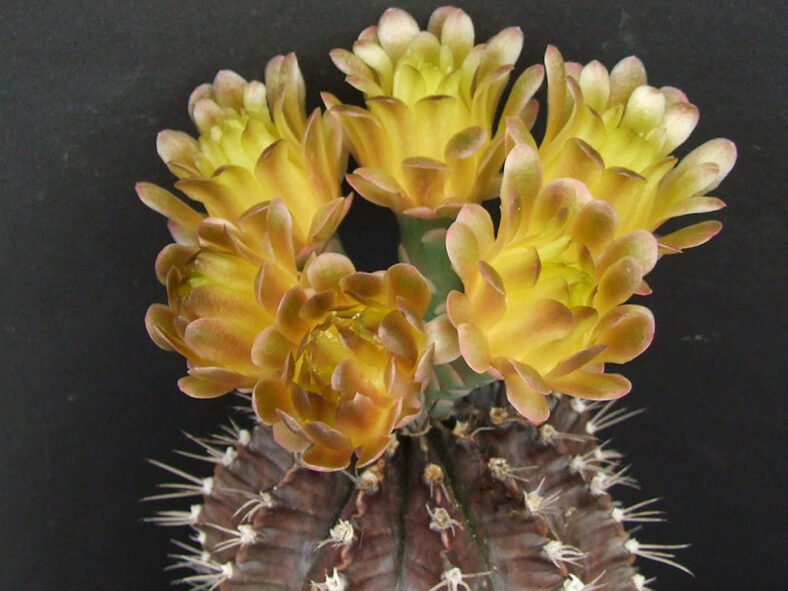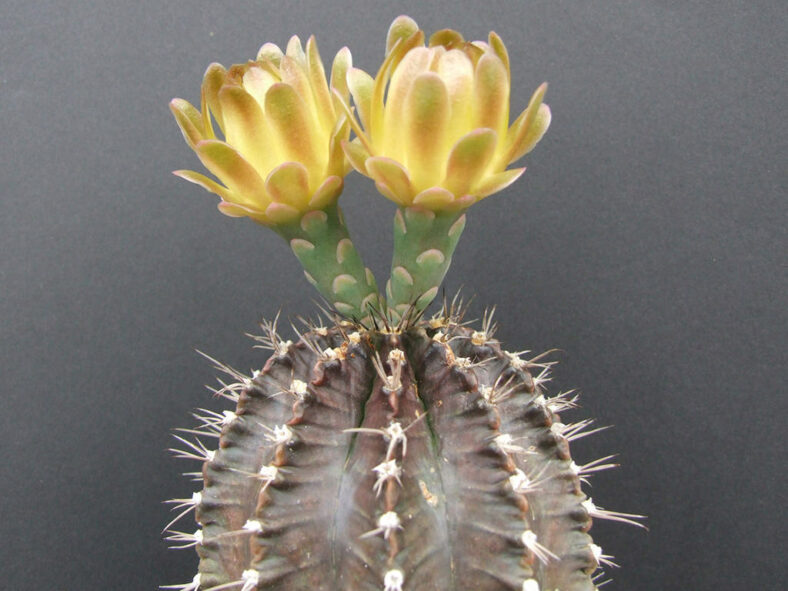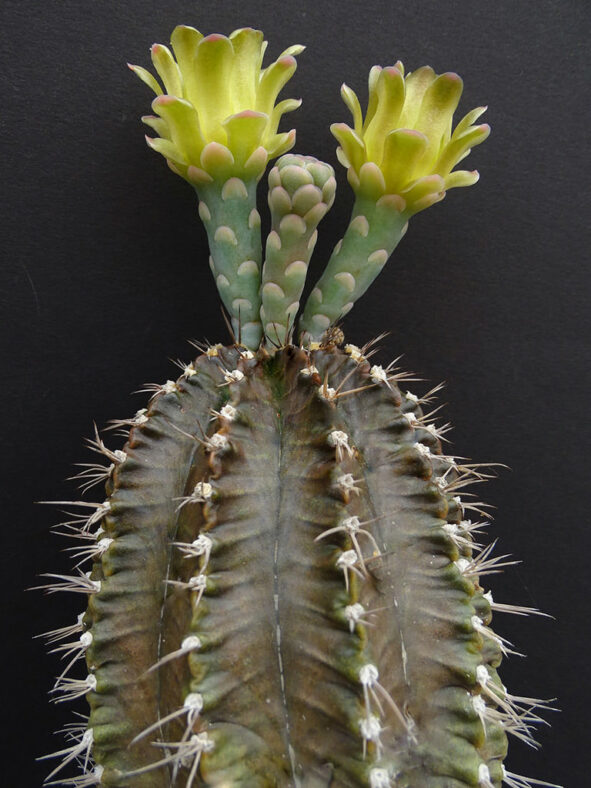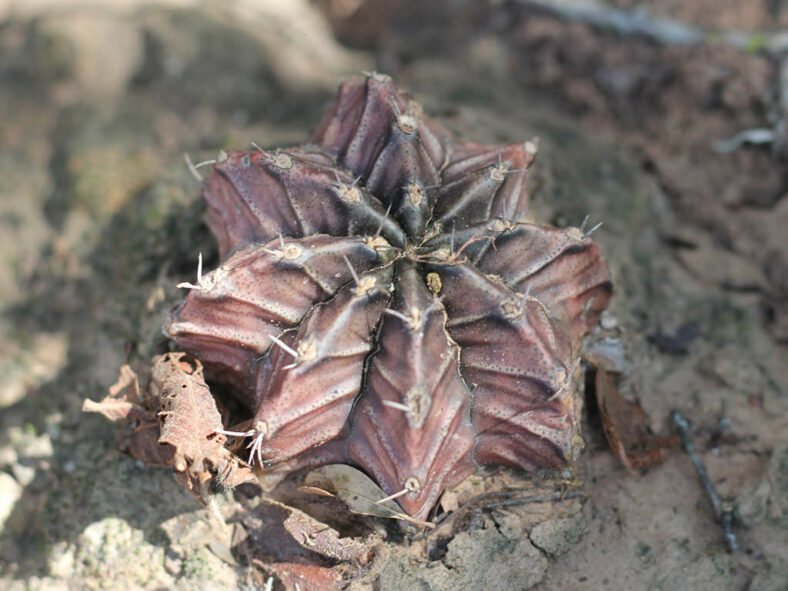Gymnocalycium mihanovichii was discovered in 1903 by Alberto Vojtěch Frič, a Czech cactus specialist. It was first described as Echinocactus mihanovichii in 1905 by Max Gürke.
Scientific Name
Gymnocalycium mihanovichii (Fric ex Gürke) Britton & Rose
Common Name(s)
Chin Cactus, Plaid Cactus
Synonym(s)
Echinocactus mihanovichii
Scientific Classification
Family: Cactaceae
Subfamily: Cactoideae
Tribe: Trichocereeae
Genus: Gymnocalycium
Etymology
The specific epithet "mihanovichii (me-han-oh-VIK-ee-eye)" honors Nicolás Mihanovich (1846–1929), a Croatian-Argentine businessman closely linked to the development of the Argentine merchant marine, who supported the trips of Alberto Vojtěch Frič to Paraguay.
Origin
Gymnocalycium mihanovichii is native to Paraguay, northeastern Argentina, and eastern Bolivia. It grows under shrubs or grasses at lower elevations up to 1,640 feet (500 m).
Description
Gymnocalycium mihanovichii is a dwarf cactus with a spherical, gray-green, often reddish stem with usually eight narrow-edged, slightly notched ribs. This species is highly variable in the spination and color of the flowers. The stem typically grows solitary, slowly reaching up to 1.6 inches (4 cm) in height and 2.4 inches (6 cm) in diameter. The spines are slightly curved, greyish-yellow, partly fall off with age, measuring up to 0.4 inches (1 cm) long. Each areole bears 5 to 6 spines.
During the summer, Gymnocalycium mihanovichii produces funnel-shaped flowers measuring up to 2 inches (5 cm) long. The flowers range from pale green to brownish-yellow. The gray-green fruits are spindle-shaped and measure up to 1.6 inches (4 cm) long and 0.4 inches (1 cm) in diameter.
Gymnocalycium mihanovichii is often confused with Gymnocalycium stenopleurum. However, it can be distinguished from the latter by its broader and lower ribs and pale green to brownish-yellow flowers that are not fully open.

How to Grow and Care for Gymnocalycium mihanovichii
Light: During the hottest months, this cactus needs some protection from direct sunlight. However, excessive shading will result in the loss of flowers.
Soil: Having soil with good drainage is most important for a healthy Gymnocalycium mihanovichii. You can use commercial soil for cacti or make your own mix.
Temperature: This cactus can tolerate high temperatures but is not a cold-hardy plant. So, if there is a risk of freezing temperatures, bring it indoors. It grows best in USDA Plant Hardiness Zones 9b to 11b, with average minimum winter temperatures ranging from 25 to 50 °F (-3.9 to 10 °C).
Watering: During the growing season, water Gymnocalycium mihanovichii frequently, but allow the soil to completely dry out before watering again. In the winter, when it goes dormant, cut back on watering.
Fertilizing: While it does not need much fertilizing, giving it some extra nutrients occasionally keeps the plant healthy and prolongs the time for repotting. During the winter, there is no need to fertilize, as the plant is not actively growing.
Repotting: Repot it every two years into a pot that is the same size or slightly larger. The best time for repotting is in late winter or early spring.
Propagation: Since it rarely produces offsets, Gymnocalycium mihanovichii is usually propagated by seed. Late spring and early summer are ideal for sowing seeds.
Learn more at How to Grow and Care for Gymnocalycium.
Toxicity of Gymnocalycium mihanovichii
Gymnocalycium mihanovichii has no toxic effects reported. However, keep it away from pets and children as it has sharp spines.
Cultivars
Links
- Back to genus Gymnocalycium
- Succupedia: Browse succulents by Scientific Name, Common Name, Genus, Family, USDA Hardiness Zone, Origin, or cacti by Genus
Photo Gallery
Click on a photo to see a larger version.



